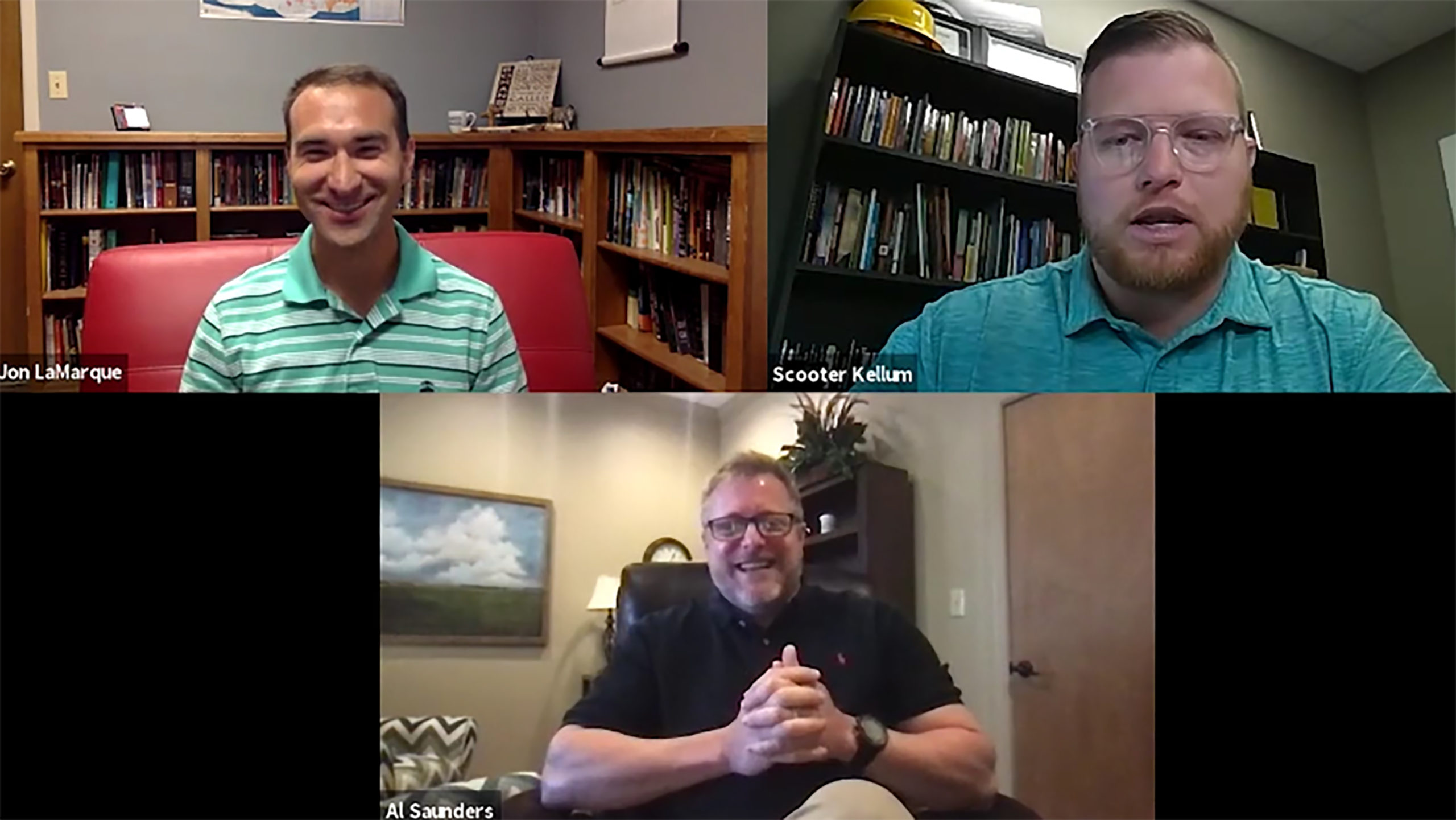Between 2007 and 2012, anxiety disorders in children and teens went up 20%, according to the National Institutes of Health. The rate of hospital admissions for suicidal teens has also doubled in the past decade.
With nearly 1 in 3 of all adolescents ages 13 to 18 suffering from anxiety, youth and student leaders are working in a challenging environment. Youth ministry in an age of increased anxiety was the focus of a recent webinar, “Conversations with the Expert: Mental Health in Teenagers,” hosted by Scooter Kellum, youth ministry strategist for the Alabama Baptist State Board of Missions.
Al Saunders, a psychologist at Wellspring Christian Clinic in Birmingham, explained that anxiety is the mental health issue teens currently struggle with most.
“I’ve been working [in mental health] 25 years now and I have seen anxiety just explode. … We can talk about pandemics all day long, but anxiety is really an epidemic amongst our teenagers. … If you walked into any high school, anyone age 13 to 18, about 25% of those people have an anxiety disorder, and that number is going up about 4% a year,” Saunders said.
Many possibilities
Sexual and gender issues, drug and alcohol abuse and a general loss of identity often are rooted in anxiety, he said. Furthermore, the leading cause of depression is anxiety.
Among mental health disorders, “anxiety and depression are number one and two,” Saunders said.
The difference between the two is fear. Saunders described how anxiety relates to fear and worry, using an example of a snake lunging out of a bush. Fear is a normal response to a major threat, and jumping out of the way, escaping or fighting back would be useful in that situation.
However, one who has anxiety continues to look for a snake for weeks. The fight or flight response lingers.
“So anxiety is more of a diffuse, generalized, nonspecific thing with a fight or flight response that’s always on, and that’s very bad for [a] body,” Saunders explained.
Anxiety isn’t always a reason to obtain professional help, he said, but sometimes counseling can help.
“Occasional anxiety is not unusual, and it’s not really even treatment worthy, but if a kid’s feelings of anxiety are extreme, they’re lasting more than a month and they’re really causing them to suffer in a lot of different areas — school, social relationships, athletics, whatever — that’s when you’re starting to think, ‘OK, this may be a disorder, an anxiety disorder,’” he said.
Signs of someone in need of help may include persistent worrying, irritability, avoiding activities or changes in grades. Other symptoms include poor concentration, substance abuse and physical symptoms like stomachaches, headaches or fatigue.
“Kids are pretty good about hiding it though, and they’re desperately searching for something to medicate it, so that’s where alcohol and drugs come in,” Saunders said.
He noted there is a difference between the depression or sadness everyone sometimes feels and clinical depression, which is severe and includes feeling sad for at least two weeks with other specific symptoms, such as major changes in sleep patterns, loss of interest in things normally enjoyed, feeling guilty and worthless, changes in energy, concentration issues, lethargy or agitation, appetite changes and thoughts or attempts of suicide.
If a teenager exhibits at least five of those symptoms for more than two weeks, Saunders said that is “definitely when someone like me needs to get a call.”
Youth pastors and volunteers may recognize the signs, Saunders said, and if so, they can help by pointing them to professional resources.
The stigma
The webinar touched on other subjects affecting teens, including the stigma of mental health needs and unhealthy coping methods like substance abuse and self-harm.
Saunders said youth leaders can begin by listening to what’s going on in the teen’s world and suggesting positive ways to cope.
“You guys in youth ministry, man, y’all are doing so good, so much more good than you even realize,” Saunders encouraged. “And it goes way beyond the spiritual; just the relationships that you guys are providing for these kids. It really [provides] a healthy connection.
“But there is a point where we need to make that phone call, try to get them some help … when it’s significantly hurting their performance in some area, or certainly when their safety is jeopardized.”
Click here to read practical ways to help children feel safe.






Share with others: